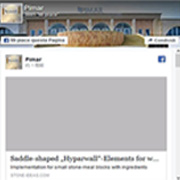Why Do Cables Have F Connectors?

The "F" connector is a threaded connection for your antenna, satellite, and maybe even your battery booster. It's so common that you probably haven't even thought about it. Before the advent of the internet, it was the most common connector in homes.
History of the F Connector
The "F" connector doesn't seem to be named by any name (for example, unlike the "N" connector named after its inventor, Paul Neal.) If it could be because it is suitable for RF, UHF, and VHF named, all have the letter F in them, but that's just guesswork. As we all know, it was invented in the 1950s and became common on TVs when antennas started using 75-ohm cables.
Before the "F" connector, most antennas used two-lead 300-ohm cables. Twin lead cables have the advantage of having a similar impedance to the antenna itself. This means that no electronics are required to change the characteristics of the cable. We don't really worry about that today, but in the days before the transistor, it was a big deal. Packages with a bit of circuitry installed in the antenna don't even register with you today. That's because it's so small. In the 1940s it would be huge and refined. It is also handmade and quite expensive.
Another option from the 1950s was the so-called UHF connector, also known as a PL-259 or SO-259 connector, either male or female. This is also a fairly compact connection, but not as easy to make as the "F" connector.
In UHF connectors, there is a solid pin in the center, making the connection more durable, but also easier to lose or make a bad connection. UHF connectors are still used in some radio applications, but I haven't seen them on TVs since the 1980s.
Advantages of "F" connectors
The "F" connector has many uses. Because it uses the center conductor of the cable as its center pin, it is less expensive to manufacture and provides a better signal. Its screw-on outside makes it secure and watertight when used with weather boots. The connector itself forms a good shield. Push-on connectors are an exception here, which is why push-on is not used for satellite or other high-frequency applications.
In addition to this, the "F" connector takes up less physical space. Compared to the larger connectors used in the 1940s and 1950s, the F connector actually looks quite compact. F connectors are similar in size to RCA connectors (the connectors used to connect audio equipment). But the F connector has better shielding and better performance.
Uses besides antennas
Antennas and satellite systems use F connectors, as almost anyone reading this will know. Consumer cellular boosters use the F connector because it is a comfortable and familiar connection. Commercial systems use 50-ohm cables with N connectors. Commercial-grade 50-ohm cables such as the LMR400 have lower losses than 75-ohm cables, but not every 50-ohm cable has lower losses than a similar 75-ohm cable. Fewer losses mean longer run times from antenna to booster.
Over the years, F-connectors have seen some quirky uses. Some early networking schemes used it. More commonly, network cables use BNC connectors or some proprietary cable for easy disconnection. While F connectors can carry some power, they are not suitable for voltages over 40 or 50 volts and a few amps due to the thin center conductor and the tiny outer braid. Still, as any satellite hobbyist knows, coax cables carry power easily.
The above briefly describes the history of the F connector and its advantages, etc. If you want to know more or want to buy an antenna or satellite connector, please contact us.
SOMI is a professional custom antenna accessories manufacturer. Our main products are antenna connectors, CATV amplifiers, CATV splitters and splitters, satellite splitters, CATV wall sockets (terminal boxes) and other high-quality CATV system accessories, audio video connectors, and connecting cables, etc. We have our own engineers, so we can design and produce products according to customers' requirements. All products are produced by automatic machines and thoroughly tested to ensure the quality of our products.


